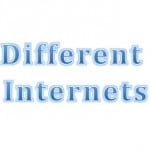 An article in Scientific American points out that the Internet shows us “what it thinks we want to see” by serving up content that matches the hidden profiles created about us based on our daily online interactions. For many that is a help. Others see it as discriminatory.
An article in Scientific American points out that the Internet shows us “what it thinks we want to see” by serving up content that matches the hidden profiles created about us based on our daily online interactions. For many that is a help. Others see it as discriminatory.
Technical advances in mining online and offline data have made it possible to skirt the spirit of the law: companies can simply not make any offers to less credit-attractive populations. If you live on the wrong side of the digital tracks, you won’t even see a credit offer from leading lending institutions, and you won’t realize that loans are available to help you with your current personal or professional priorities.
The article continues….
Imagine an Internet where unseen hands curate your entire experience. Where third parties predetermine the news, products and prices you see—even the people you meet. A world where you think you are making choices, but in reality, your options are narrowed and refined until you are left with merely the illusion of control.
This is not far from what is happening today. Thanks to technology that enables Google, Facebook and others to gather information about us and use it to tailor the user experience to our own personal tastes, habits and income, the Internet has become a different place for the rich and for the poor. Most of us have become unwitting actors in an unfolding drama about the tale of two Internets. There is yours and mine, theirs and ours.
Here’s how it works. Advertising currently drives the vast majority of the Internet industry by volume of revenue. Silicon Valley is excellent at founding and funding companies that give you free apps and then collect and sell your data when you use them. For most of the Internet’s short history, the primary goal of this data collection was classic product marketing: for example, advertisers might want to show me Nikes and my wife Manolo Blahniks. But increasingly, data collection is leapfrogging well beyond strict advertising and enabling insurance, medical and other companies to benefit from analyzing your personal, highly detailed “Big Data” record without your knowledge. Based on this analysis, these companies then make decisions about you—including whether you are even worth marketing to at all.
As a result, 99 percent of us live on the wrong side of a one-way mirror, in which the other 1 percent manipulates our experiences. Some laud this trend as “personalization”—which sounds innocuous and fun, evoking the notion that the ads we see might appear in our favorite color schemes. What we are talking about, however, is much deeper and significantly more consequential.
For example, federal regulations make it illegal to discriminate in pricing access to credit based on certain personal attributes. But, as Natasha Singer recently reported in the New York Times, technical advances in mining online and offline data have made it possible to skirt the spirit of the law: companies can simply not make any offers to less credit-attractive populations. If you live on the wrong side of the digital tracks, you won’t even see a credit offer from leading lending institutions, and you won’t realize that loans are available to help you with your current personal or professional priorities.
For the past decade, e-commerce sites have altered prices based on your Web habits and personal attributes. What is your geography and your past buying history? How did you arrive at the e-commerce site? What time of day are you visiting? An entire literature has emerged on the ethics, legality and economic promise of pricing optimization. And the field is advancing quickly: last September, Google received a patent on technology that lets a company dynamically price electronic content. For instance, it can push the base price of an e-book up if it determines you are more likely to buy that particular item than an average user; conversely, it can adjust the price down as an incentive if you are judged less likely to purchase. And you won’t even know you are paying more than others for the exact same item.
These blind walls also appear in our digital political lives. As Eli Pariser has observed, the Internet shows us “what it thinks we want to see” by serving up content that matches the hidden profiles created about us based on our daily online interactions. This behind-the-scenes curation reinforces our political points of view through online “echo chambers” that affirm, instead of challenge, what we already believe to be true. As Harvard University scholar Cass Sunstein has written, liberals and conservatives who deliberate questions openly only with people of the same political stripe become more confident and extreme in their views.
Segregation and separation are on the rise. The fun of personalization has a dark side.
Tags: Internet

